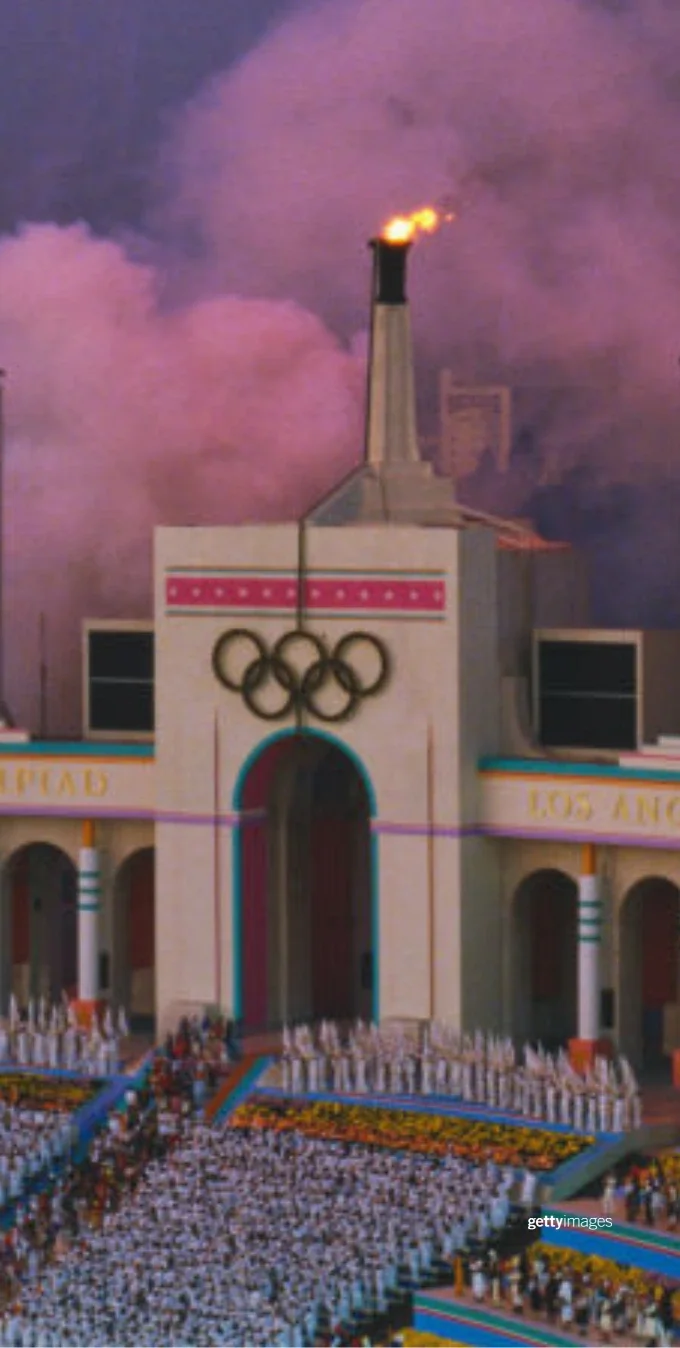
The Games that Changed the Game: The Legacy of the 1932 and 1984 Olympic Games
By: LA28 Staff
To celebrate the anniversary of the Los Angeles 1932 and 1984 Olympic Games, LA28 is honoring their lasting legacies. From elevating historic female achievements to introducing innovative telecommunications, the 1932 and 1984 Games redefined the way the Olympics are celebrated and known.
The 1932 Games

What a Venue!
Now a distinguished embodiment of the Olympic Movement, the LA Memorial Coliseum welcomed over 101,000 spectators on July 30, 1932, for the Olympic Opening Ceremony. In addition to the Opening and Closing Ceremonies, Athletics, Equestrian, Hockey and Artistic Gymnastics events took place in the colossal venue under the iconic Olympic flame. The 1932 Games also saw remarkable new venue constructions including the Long Beach Marine Stadium, the first manmade rowing course in the United States, and the Grand Olympic Auditorium, the largest indoor arena at the time, which hosted Boxing, Wrestling and Weightlifting events.
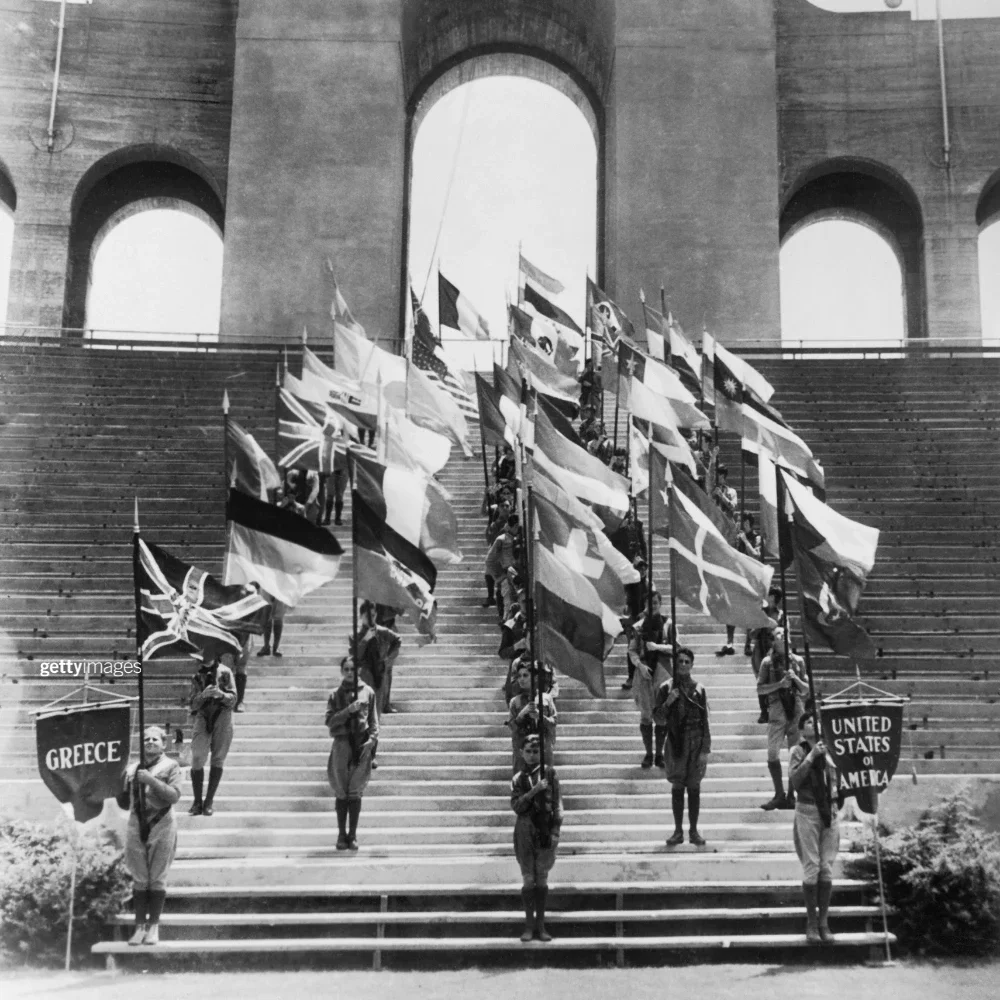
Establishing the Experience
The 1932 Olympic Games saw several firsts that remain traditions today. Winners stood on tiered podiums for the first time, with the gold medalist standing in the middle at the highest position. Another first was the raising of the home country flag of each medalist while their respective national anthems played in the background. Additionally, while previous Games had stretched over several months, the 1932 Games lasted just 16 days, setting the format for the modern Olympic Games that take place over 15-18 days. The Games featured an athlete residence, setting the standard for modern Los Angeles’ first Athlete Village: a nucleus of everyday life, with 500 portable homes and several amenities, including a movie theater and post office.
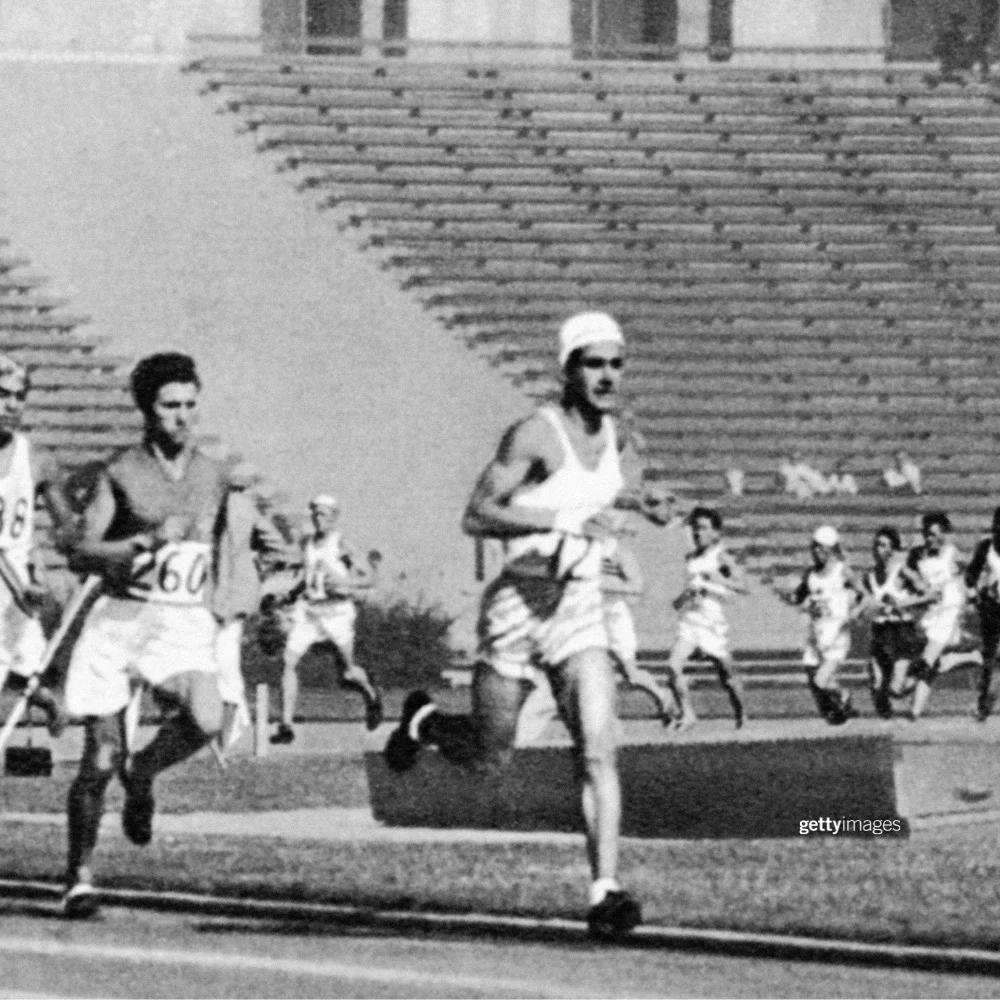
Performances of a Lifetime
The Xth Olympiad saw no shortage of athletic excellence. U.S. Olympian Mildred “Babe” Didrikson demonstrated her athletic fluency across several events, earning gold medals in the 80m hurdles and javelin throw, as well as notching a silver in the high jump. At just 20 years old, Argentinean Olympian Juan Carlos Zabala won his country’s first Athletics gold medal in the marathon and remains the youngest winner in the event’s history. Japan’s Kusuo Kitamura proved another standout performer of the 1932 Games as he swam to victory in the 400m freestyle. Kitamura was 14 years and 309 days young, the youngest Olympic champion of men’s Swimming to this day.
The 1984 Games
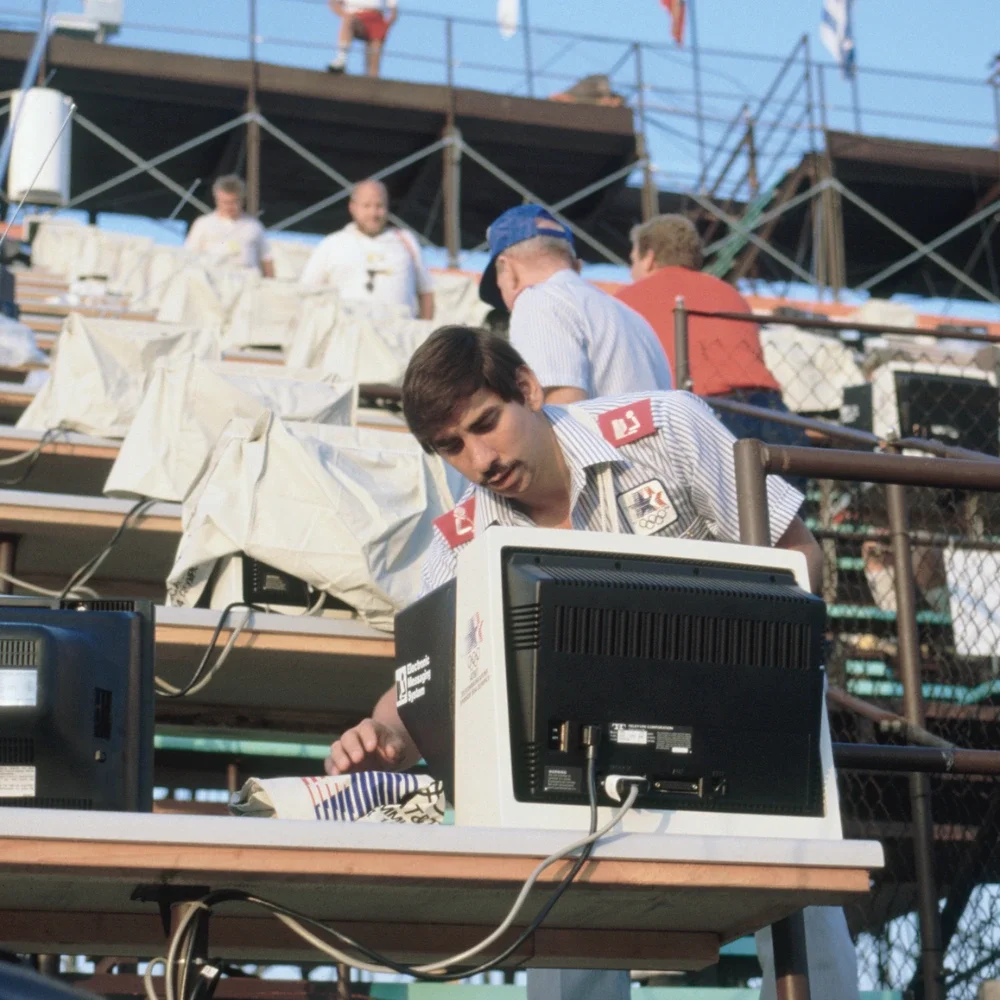
Technology Takeover
At the 1984 Olympic Games, four-time gold medalist Carl Lewis wasn’t the only one with a need for speed. The 1984 Games debuted an Electronic Messaging System, a novel e-communication method that athletes and media used for timely alerts and organization, as well as the Olympic Message System, a technology that provided athletes the opportunity to easily record and send voice messages to friends, families and each other.
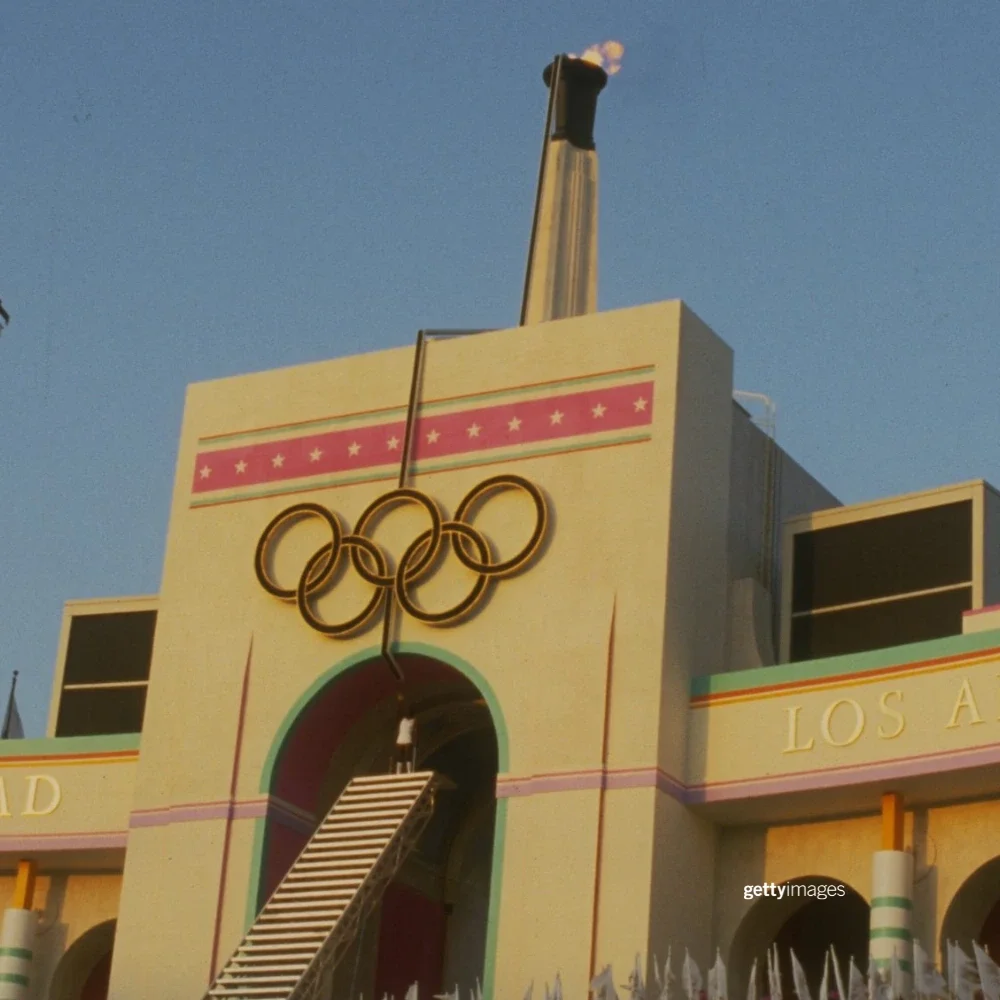
A New Financial Model
Instead of building infrastructure solely for the 1984 Games, existing, iconic venues like the LA Memorial Coliseum, Rose Bowl Stadium and the Anaheim Convention Center were utilized. This decision, coupled with the first sponsorship program for an Olympic Games, introduced a financially viable model for future Games. The 1984 Games’ profit funded the LA84 Foundation, which continues to advocate for youth sports participation in Southern California to this day.
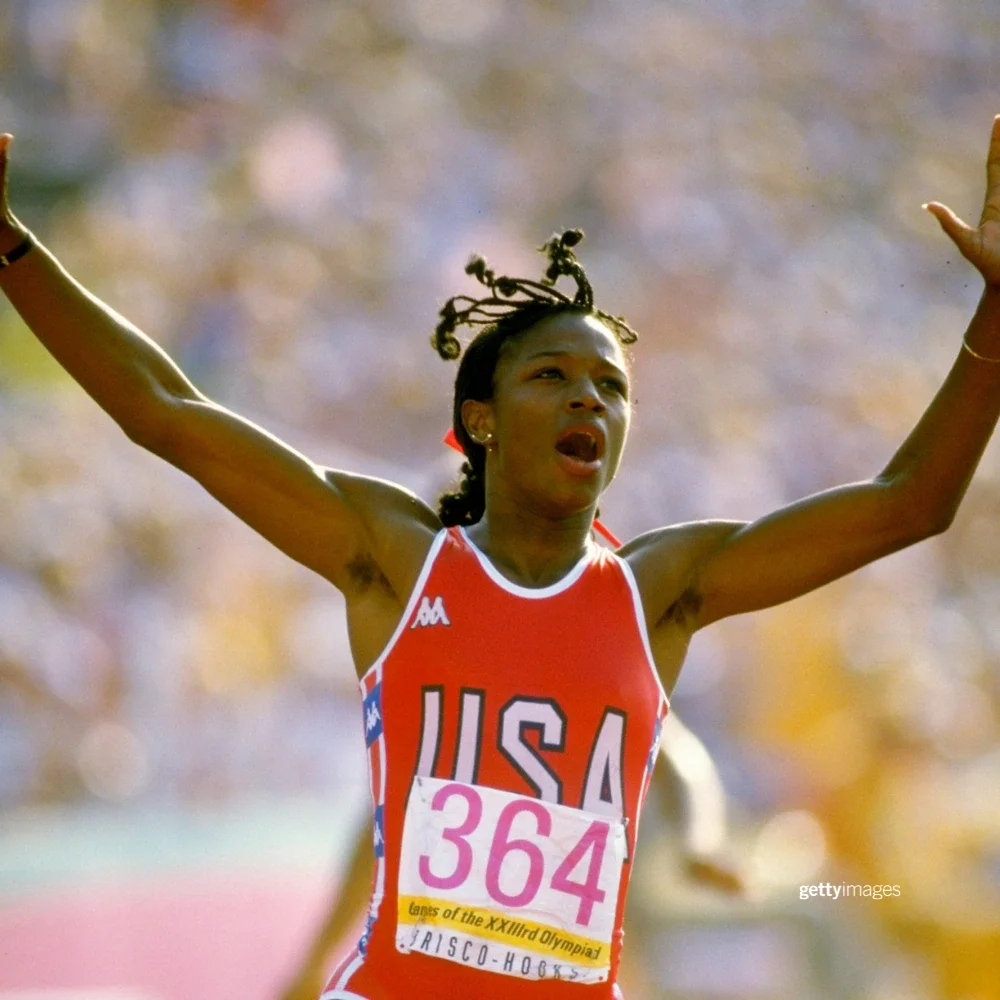
Women for the Win
The 1984 Games also marked a significant milestone for gender equity. For the first time, women competed in the marathon, 400m hurdles, 3000m (now 5000m) and Cycling Road events. The Games also premiered exclusively female disciplines, like Rhythmic Gymnastics and Artistic Swimming (formerly Synchronized Swimming). Enthralling performances included U.S. Athletics Olympian, Valerie Brisco-Hooks, who took home a gold trifecta in the 200m, 400m and 4x100m relay, and U.S. Gymnastics wonder Mary Lou Retton, who won five medals, including the U.S.’s first gold in the women’s all-around event.
Looking to the Future
From seeing the LA Memorial Coliseum become the first stadium in the world to host the Opening and Closing Ceremonies and Athletics events of three separate Games, to featuring a historic number of female athletes across all sports, LA28 is set to surpass historic milestones.
LA28 is also proud to welcome the Paralympic Games to the City of Angels for the first time ever. Across 12 venues and 24 sports, the 2028 Paralympic Games will spotlight the feats and excellence of athletes with disabilities on the global stage.

